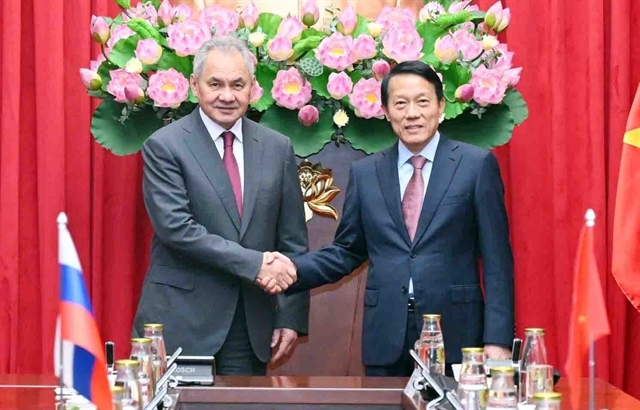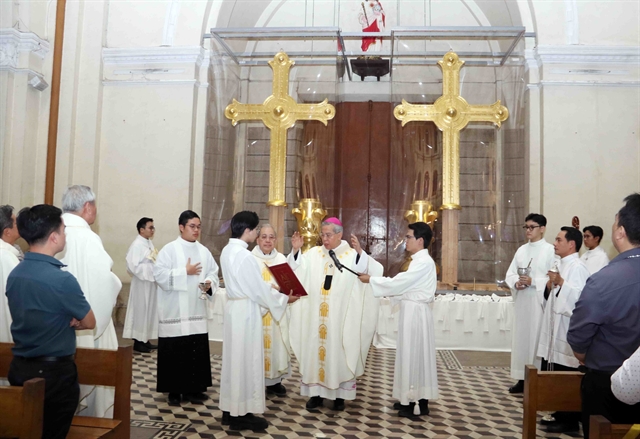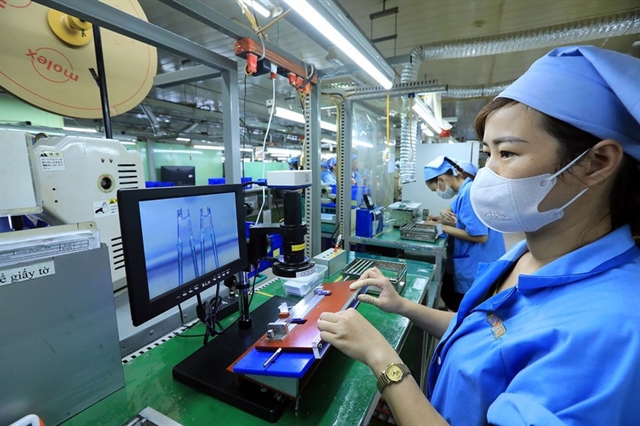 Society
Society
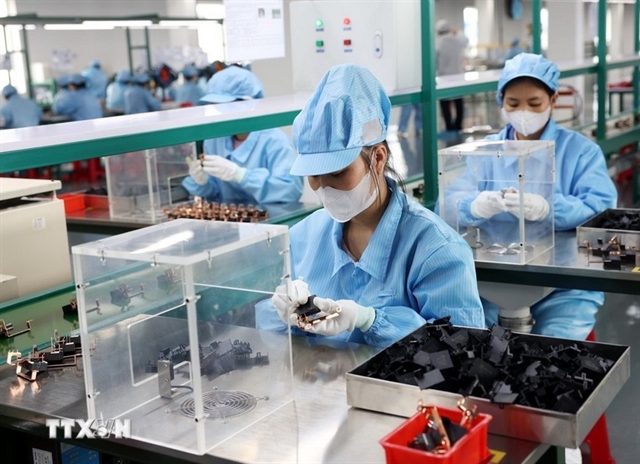

|
| A volunteer helps a visitor submit online applications at the Bà Rịa Ward public administrative service centre in HCM City. – VNA/VNS Photo Huỳnh Sơn |
HCM CITY – HCM City’s new two-tier government has got off to an auspicious start, speeding up administrative procedures and increasing public satisfaction.
After the merger of the former Bình Dương and Bà Rịa – Vũng Tàu provinces with the city on July 1, it now has 168 communes, wards and special zones.
These local units have adopted many effective service models and creative approaches, improving public services and earning the trust of both citizens and businesses.
At Phước Thắng Ward’s public administrative service centre, the “one-to-one” model, where a young volunteer assists each resident with administrative procedures, helps ease pressure on staff.
According to Đỗ Đức Khanh, deputy director of the centre, combining the two-tier local government model with the centre has produced positive results.
The centre serves as the single focal point for handling administrative procedures, while the two-tier model streamlines the system, reduces intermediaries and shortens processing times, he said.
This not only makes life easier for residents and businesses but also improves service quality and increases public satisfaction, he said.
The An Khánh Ward public administrative service centre has introduced six service models, including certifying signatures at home or in hospitals, issuing death certificates and notices at home, working on Saturday mornings and working through lunch breaks.
These initiatives are praised as humane and embodying the spirit of serving the people.
Nguyễn Xuân Quỳnh, deputy chairman of the An Khánh Ward People’s Committee, said the centre applies information technology in collecting fees and charges.
It uses automated e-receipt software, POS card readers and QR-code payments.
“The use of online payment channels and electronic invoices and receipts also ensures transparency in administrative procedures.”
In Phú Giáo, the city’s largest commune, the two-tier model saves time and reduces travel costs for residents.
Vũ Hải Lý, chairman of the Phú Giáo People’s Committee, said: “Previously, under the three-tier model, residents had to travel from commune to district and then to the province to complete procedures. Now they only need to go to the commune, which also handles tasks once managed by the district.”
Nguyễn Thị Hoa, 58, of Phú Giáo’s Phước Lập Hamlet said her home is nearly 20 kilometres from the commune centre, and in the past she had to travel to the district to complete paperwork, losing an entire day.
Now, procedures could be completed at the commune much faster, she said.
If mobile administrative reception points are introduced in remote hamlets, it would be even more convenient for the public, she added.
Service-oriented administration
Since the adoption of the two-tier model, the service orientation of the administration is evident in many wards and communes.
The Tân Đông Hiệp Ward public administrative service centre has set up a “self-service counter” offering free food and drinks, creating a friendly environment that residents welcome.
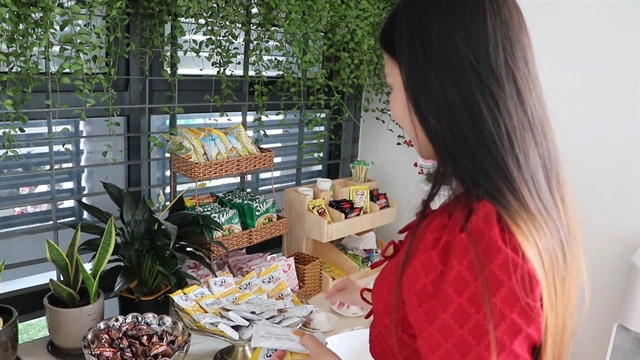
|
| A visitor gets free breakfast at the Tân Đông Hiệp Ward public administrative service centre in HCM City. – VNA/VNS Photo Huyền Trang |
In Bà Rịa Ward, staff have been assigned according to expertise and use information technology to speed up administrative tasks.
Võ Văn Thành Sang, deputy secretary of the Vũng Tàu Ward Party Committee, said online submission and processing of procedures such as certified copies and signature authentication are now faster than in-person handling, which indicates the new working method is working well.
To help officials quickly adapt to the digital environment, the Vũng Tàu Ward People’s Committee held a training conference on applying artificial intelligence in administrative work.
It was attended by 200 officials and staff, creating a ripple effect and improving the local administrative apparatus.
Since July 31 teams of five officials from the city’s public administrative service centre have been stationed in 38 communes and wards to directly receive “borderless” applications, which means they ignore jurisdictions and accept from any person.
People can complete procedures anywhere, without having to return to their registered place of residence.
Vũ Quang Vinh, deputy director of the Vũng Tàu Ward public administrative service centre, said: “The ‘borderless’ model is very meaningful. It saves time and costs for residents.”
Young volunteers at service centres play a vital role by guiding residents through paperwork and online processes, and also creating a friendly atmosphere.
“I feel happy that I'm doing something to help the community,” Nguyễn Phạm Minh Nghĩa, a young volunteer in Bà Rịa Ward, said.
Some wards even use robots and AI assistants to ease staff workloads.
Thủ Đức Ward uses a robot as a receptionist to apprise visitors about procedures and another to serve them drinks and snacks.
In An Khánh Ward, two robots collect resident feedback and operate all day, encouraging online submissions.
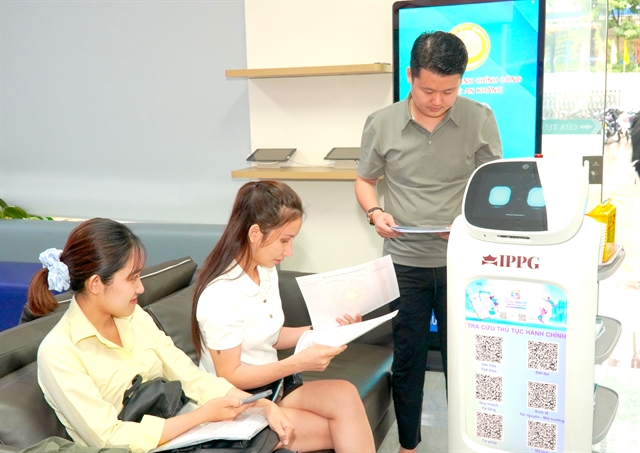
|
| An AI robot in HCM City’s An Khánh Ward hands out forms to visitors and apprises them about administrative procedures. – VNA/VNS Photo Hữu Duyên |
HCM City has 1,182 administrative procedures under the authority of departments and agencies, which are now received and processed regardless of administrative boundaries.
There are 154 administrative procedures under the authority of communes and wards.
Nguyễn Văn Được, chairman of the HCM City People’s Committee, has repeatedly instructed officials to accept and process applications for administrative procedures regardless of jurisdiction.
The city targets having this model for all administrative procedures by the end of the year, he said.
The city has recorded a public satisfaction rate of 95.56 per cent for the two-tier model, according to the Department of Home Affairs.
The city has effectively carried out two tasks: strengthening its administrative apparatus while supporting economic growth.
Được said availability of adequate personnel has been an issue.
Uneven staff allocation and heavy workloads have led some commune-level leaders to resign, he said.
Under the two-tier model, commune leaders have direct decision-making power but lack professional staff for advice and processing, he said.
This increases pressure on them, he admitted.
He has instructed the Department of Home Affairs to work with other agencies to depute professional staff to communes and wards to provide hands-on guidance.
Phạm Thị Thanh Hiền, director of the department, said in the last four months of 2025, the city would focus on implementing the second phase of the reorganisation process, which includes reorganising the internal structures of departments and commune-level people’s committees, renovating working methods, promoting digital transformation, and modernising public services.
“This is a core task to ensure the two-tier model runs smoothly. It will help officials and civil servants fulfil their tasks, motivate them to contribute and grow and build an administrative apparatus that works efficiently, saves costs and becomes more professional.” – VNS

